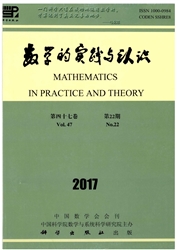

 中文摘要:
中文摘要:
根据IPCC关于交通能源消费碳排放量的计算方法,对2005-2011年江苏省交通碳排量构成和交通碳排放强度进行了测算.基于LMDI分解技术,从交通能源强度因素、交通运输业经济份额因素、第三产业增加值因素和交通能源结构因素四个方面对江苏省交通碳排放的变化进行分析.测算和分析结果表明:交通能源强度呈明显下降状态,在其影响下交通碳排放强度呈下降趋势,说明交通能源利用率不断提高;交通碳排量呈增长的趋势,第三产业增加值因素影响最大,体现为正效应,促进交通碳排放,交通能源强度因素和交通运输业经济份额因素体现为负效应,交通能源结构因素除2011年均体现为负效应,抑制交通碳排放.
 英文摘要:
英文摘要:
According to the calculation method of the IPCC, the paper calculates the com- position and intensity of carbon emissions from transportation energy consumption in Jiangsu from 2005 to 2011. Based on LMDI decomposition technique, changes of carbon emissions quantity are analyzed by the four factors which are the transportation energy intensity, the ratio of transportation economics, the added value of the tertiary industry and the transporta- tion energy structure. The results show: 1) Transportation energy intensity was significantly decreased. Under its influence carbon emission intensity from the transportation energy was decreased, indicating that the energy efficiency was improved continuously. 2) Transport car- bon emissions were in a growing trend. The greatest influence factor was the added value of the tertiary industry which had a positive effect and enlarged transportation carbon emis- sions quantity. On the other hand, the factors of the transportation energy intensity and the ratio of transportation economics had a negative effect. Except 2011, the transportation energy structure always had a negative effect, which reduced transportation carbon emissions quantity.
 同期刊论文项目
同期刊论文项目
 同项目期刊论文
同项目期刊论文
 Application of Real-Time Automated Traffic Incident Response Plan Management System: A Web Structure
Application of Real-Time Automated Traffic Incident Response Plan Management System: A Web Structure 期刊信息
期刊信息
